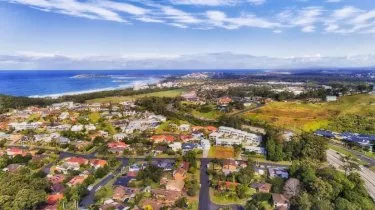Invest
Rental yields reach decade high, but not all markets move at the same pace
Invest
Rental yields reach decade high, but not all markets move at the same pace
Changing consumer preferences towards lifestyle destinations and a lack of supply have led to record national price growth, albeit price fluctuations vary region-to-region, fresh figures show.
Rental yields reach decade high, but not all markets move at the same pace
Changing consumer preferences towards lifestyle destinations and a lack of supply have led to record national price growth, albeit price fluctuations vary region-to-region, fresh figures show.

National rents soared by an impressive 6.6 per cent in the 12 months to June, making the fastest annual growth in dwelling rents since January 2009, new CoreLogic data revealed.
Strong annual growth comes despite a slight drop in quarterly national growth rates from 3.2 per cent in the March quarter to 2.1 per cent in the three months to June.
National gross rental yields also followed the downward trend, hitting 3.41 per cent in the June quarter, slightly down from 3.5 per cent in the March quarter and 3.73 per cent a year earlier.
While Australia as a whole is showing strong rental growth, the regions continued to outpace the capital cities, with rents rising 2.7 per cent in the June quarter, compared with a 1.9 per cent rise across the capital cities.

Both, however, saw a reduction in growth from the previous quarter.
But despite the reduced growth in the months to June, annual regional rental growth reached 11.3 per cent in June, the highest annual growth on record since CoreLogic started collecting the data in 2005.
CoreLogic’s head of research Australia, Eliza Owen, believes the current house price swings are the result of a number of factors, including a lack of supply particularly in the regions, strong government support, overall house price growth and a swift economic recovery.
However, she opined, growth is likely to slow in the foreseeable future.
“It is interesting to note that, as with house prices, rent prices are seeing a deceleration in growth at the national level and across each of the capital cities.
“This may reflect affordability constraints, but there could also be higher levels of rental supply as investor activity in the market increases,” Ms Owen explained.
The researcher also reminded investors that not all markets are moving at the same pace.
In fact, looking only at the capital cities, very differing stories emerge, with Darwin’s rental yield up by 21.8 per cent, while Melbourne’s free-falls to a 1.4 per cent contraction.
Canberra remained the most expensive city to rent, with Adelaide the most affordable.
According to Ms Owen, pockets of the rental market remain subdued partly due to the unique impacts COVID-19 has had on different parts of the country.
“In Sydney and Melbourne, unit rents continue to show year-on-year decline, at -1.1 per cent and -6.4 per cent, respectively.
“As noted in previous quarters, these cities, which have historically had the highest intake of international migrants, have seen rental demand most impacted by international border closures amid the pandemic. Although demand across these unit markets remains fairly subdued, there are signs that rents may be stabilising at lower levels.”
Despite the national borders remaining closed, Australia’s two largest cities are showing signs of life.
“In fact, Sydney unit rents have begun to creep higher in recent quarters, including a 1.8 per cent uplift in the three months to June,” Ms Owens said.
“Melbourne unit rents have also started to show signs of stabilising, with values remaining flat over the quarter.”
“Recent lockdown conditions across Sydney may impact rental markets where there are high concentrations of renters in affected industries, such as hospitality and tourism. These regions include the inner-city market of Sydney, which has been one of the more subdued Sydney rental markets through the pandemic,” she explained.
Hobart too had been negatively impacted by the onset of COVID-19, seeing a peak-to-trough decline of 5 per cent in 2020, but has now recovered to record highs.
“Anecdotally, many short-term accommodation holders had marketed their property on the long-term rental market amid domestic and international travel restrictions,” the researcher explained.
“However, as domestic travel flows have somewhat normalised, save for sporadic lockdown conditions, the return of domestic tourism may have seen the reversion of this excess supply to short term accommodation.”
Ms Owen predicted Australia’s rental market will continue to mimic the purchasing market.
“Very high rental growth is unsustainable, while income growth remains subdued. The result will likely be more subdued growth rates in the coming quarters, especially as investor participation trends higher, delivering more rental supply,” Ms Owen concluded.
About the author

About the author


Property
Australia’s mortgage knife‑fight: investors, first‑home buyers and the new rules of lender competition
The mortgage market is staying hot even as rate relief remains elusive, with investors and first‑home buyers chasing scarce stock and lenders fighting for share on price, speed and digital experienceRead more

Property
Breaking Australia’s three‑property ceiling: the finance‑first playbook for scalable portfolios
Most Australian investors don’t stall at three properties because they run out of ambition — they run out of borrowing capacity. The ceiling is a finance constraint disguised as an asset problem. The ...Read more

Property
Gen Z's secret weapon: Why their homebuying spree could flip Australia's housing market
A surprising share of younger Australians are preparing to buy despite affordability headwinds. One in three Gen Z Australians intend to purchase within a few years and 32 per cent say escaping rent ...Read more

Property
Tasmania’s pet-positive pivot: What landlords, BTR operators and insurers need to do now
Tasmania will soon require landlords to allow pets unless they can prove a valid reason to refuse. This is more than a tenancy tweak; it is a structural signal that the balance of power in rental ...Read more

Property
NSW underquoting crackdown: the compliance reset creating both cost and competitive edge
NSW is moving to sharply increase penalties for misleading price guides, including fines linked to agent commissions and maximum penalties up to $110,000. Behind the headlines sits a more ...Read more

Property
ANZ’s mortgage growth, profit slump: why volume without margin won’t pay the dividends
ANZ lifted home-lending volumes, yet profits fell under the weight of regulatory and restructuring costs—an object lesson in the futility of growth that doesn’t convert to margin and productivityRead more

Property
Rate pause, busy summer: where smart capital wins in Australia’s property market
With the Reserve Bank holding rates steady, the summer selling season arrives with rare predictability. Liquidity will lift, serviceability stops getting worse, and sentiment stabilises. The ...Read more

Property
The 2026 Suburb Thesis: A case study in turning trend lists into investable strategy
A new crop of ‘suburbs to watch’ is hitting headlines, but translating shortlist hype into bottom-line results requires more than a map and a mood. This case study shows how a disciplined, data-led ...Read more

Property
Australia’s mortgage knife‑fight: investors, first‑home buyers and the new rules of lender competition
The mortgage market is staying hot even as rate relief remains elusive, with investors and first‑home buyers chasing scarce stock and lenders fighting for share on price, speed and digital experienceRead more

Property
Breaking Australia’s three‑property ceiling: the finance‑first playbook for scalable portfolios
Most Australian investors don’t stall at three properties because they run out of ambition — they run out of borrowing capacity. The ceiling is a finance constraint disguised as an asset problem. The ...Read more

Property
Gen Z's secret weapon: Why their homebuying spree could flip Australia's housing market
A surprising share of younger Australians are preparing to buy despite affordability headwinds. One in three Gen Z Australians intend to purchase within a few years and 32 per cent say escaping rent ...Read more

Property
Tasmania’s pet-positive pivot: What landlords, BTR operators and insurers need to do now
Tasmania will soon require landlords to allow pets unless they can prove a valid reason to refuse. This is more than a tenancy tweak; it is a structural signal that the balance of power in rental ...Read more

Property
NSW underquoting crackdown: the compliance reset creating both cost and competitive edge
NSW is moving to sharply increase penalties for misleading price guides, including fines linked to agent commissions and maximum penalties up to $110,000. Behind the headlines sits a more ...Read more

Property
ANZ’s mortgage growth, profit slump: why volume without margin won’t pay the dividends
ANZ lifted home-lending volumes, yet profits fell under the weight of regulatory and restructuring costs—an object lesson in the futility of growth that doesn’t convert to margin and productivityRead more

Property
Rate pause, busy summer: where smart capital wins in Australia’s property market
With the Reserve Bank holding rates steady, the summer selling season arrives with rare predictability. Liquidity will lift, serviceability stops getting worse, and sentiment stabilises. The ...Read more

Property
The 2026 Suburb Thesis: A case study in turning trend lists into investable strategy
A new crop of ‘suburbs to watch’ is hitting headlines, but translating shortlist hype into bottom-line results requires more than a map and a mood. This case study shows how a disciplined, data-led ...Read more








